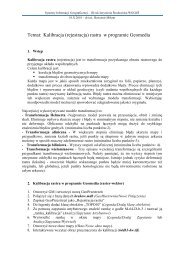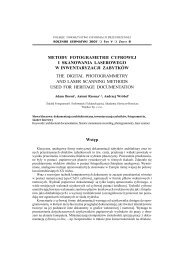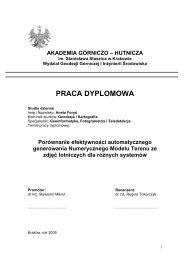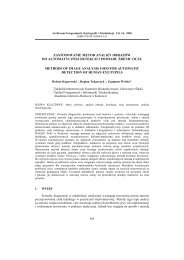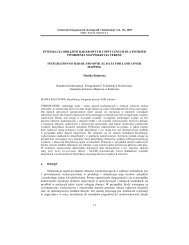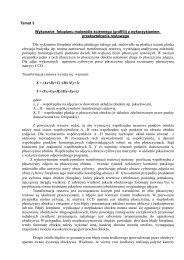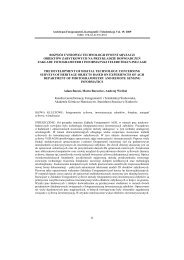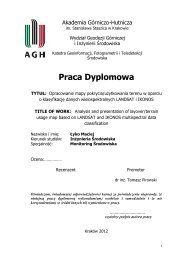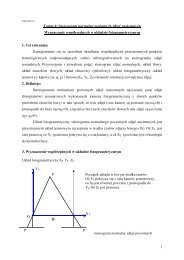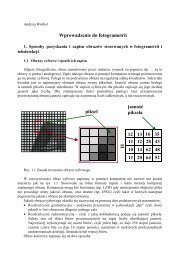Praca Dyplomowa - Photogrammetry and Remote Sensing - AGH
Praca Dyplomowa - Photogrammetry and Remote Sensing - AGH
Praca Dyplomowa - Photogrammetry and Remote Sensing - AGH
You also want an ePaper? Increase the reach of your titles
YUMPU automatically turns print PDFs into web optimized ePapers that Google loves.
THEORETICAL BACKGROUND<br />
To make camera calibration, pictures of special calibration chart should be taken with fixed<br />
settings: fixed focal length, focus, principle distance, aperture; <strong>and</strong> it is more secure to at least<br />
fix the lens with a tape to prevent eventual moving. They should be taken also on the same<br />
day with the same conditions, e.g. temperature <strong>and</strong> humidity. The test field may differ. Most<br />
of software companies developed their own calibration pattern; however it is usually possible<br />
to create a new one. Using pattern that the company recommends to use – calibration<br />
computation is automatic, otherwise mainly all the points have to be measured manually or at<br />
least semi-automatically. Every software has his own recommendations how to take pictures<br />
(from which angles etc.) <strong>and</strong> how many. It is also possible to make self – calibration on the<br />
field, but the results may not be as accurate as using test field. Without camera calibration a<br />
slightly different equations are used <strong>and</strong> it is very hard to find the error when it occurs.<br />
No matter what kind of software is used the same features, listed below are computed. The<br />
algorithms may be slightly different but the principle is the same – to get the most accurate<br />
results – with Least Square Method (LSM).<br />
Perspective centre <strong>and</strong> distortion<br />
Mathematically, the perspective centre is defined by the point of central perspective that is the<br />
point through which all straight lines from all image rays pass. Perspective centre depends on<br />
chosen aperture. This point may be defined both external <strong>and</strong> internal of objective. In the ideal<br />
case these points are equal. Similarly in ideal case, principle distance c is equal to the image<br />
distance a’, still there is always some error. What is more, lens distortions, which will always<br />
occur, also change interior geometry. Geometric basics of perspective centre <strong>and</strong> distance<br />
shows Figure 2.2.The shift of the point on the image may be computed:<br />
Where:<br />
τ – angle of incidence<br />
τ’- exit angle<br />
r’ – image radius of an image point<br />
∆r‟- radial shift due to distortion<br />
Figure 2.3 Perspective centre <strong>and</strong> principle distance (Luhmann et al., 2006)<br />
12<br />
(2.2)




